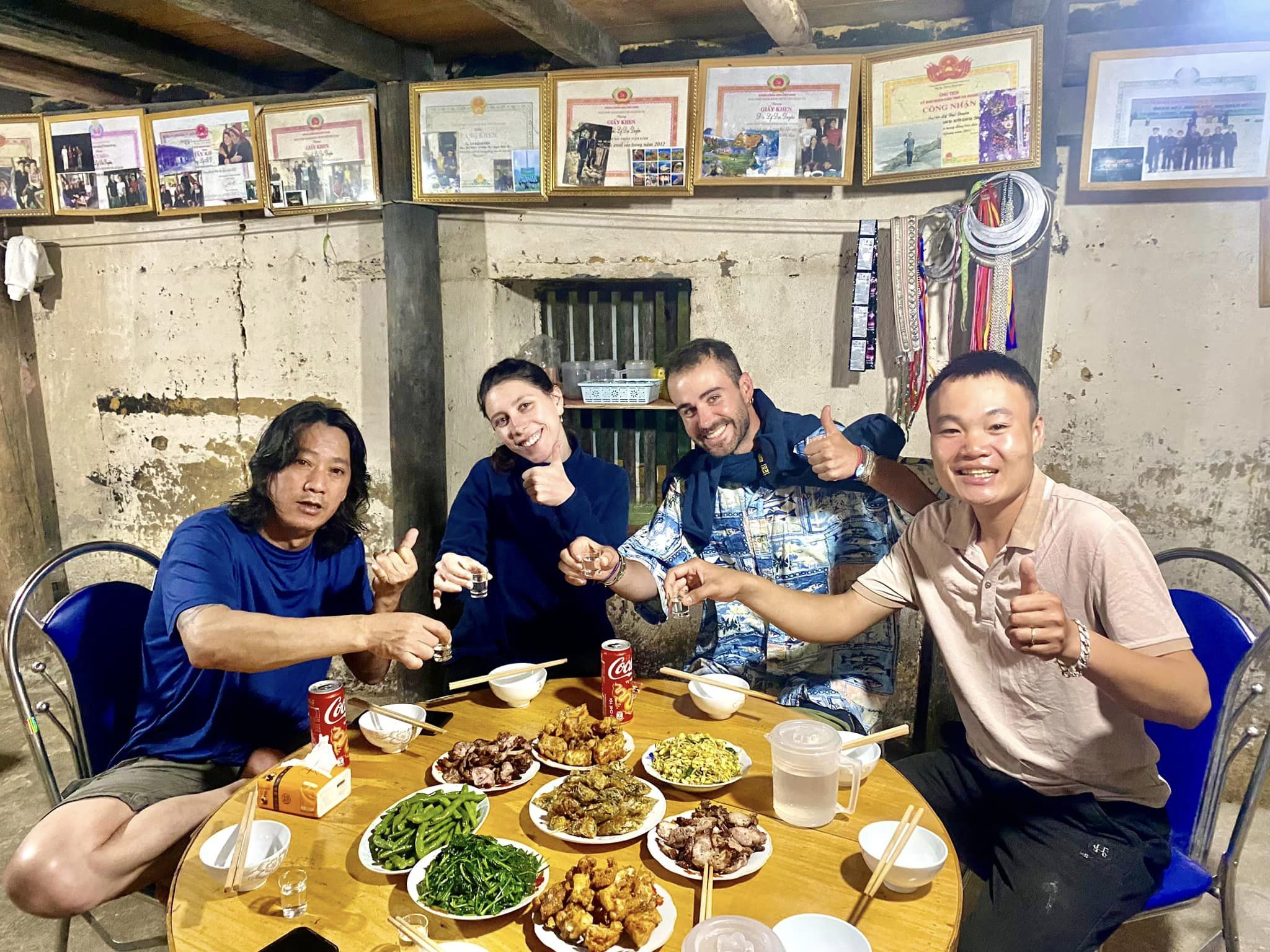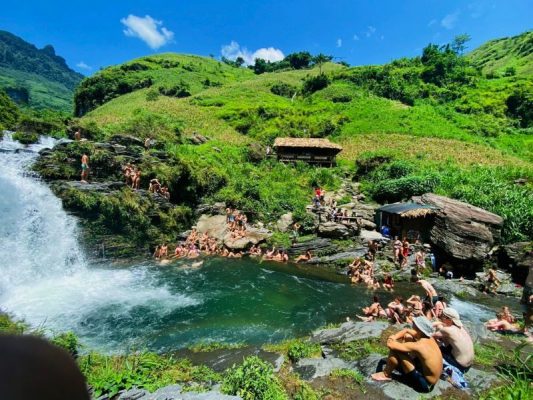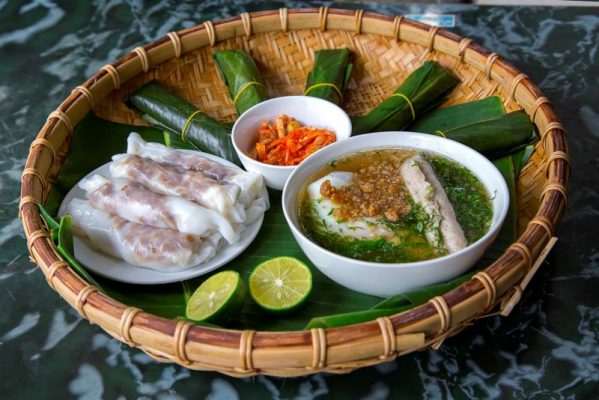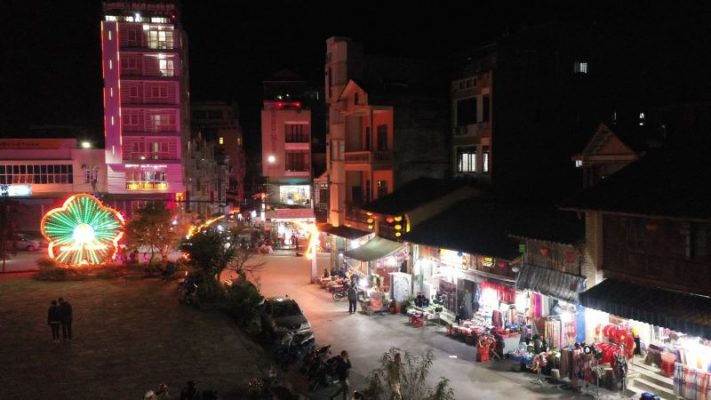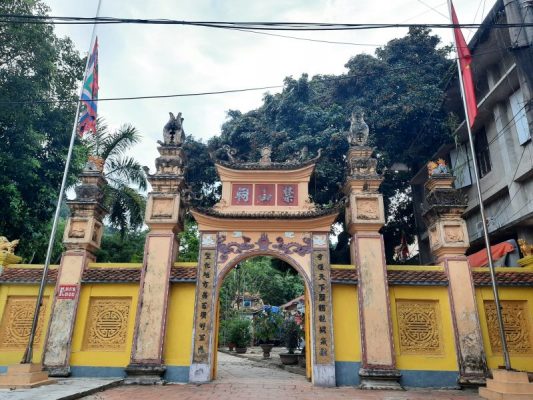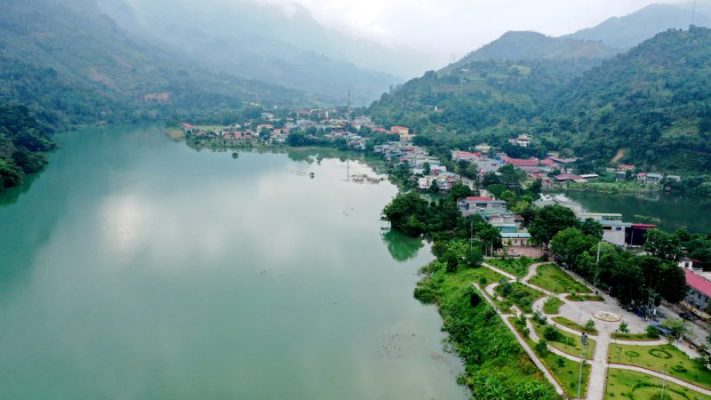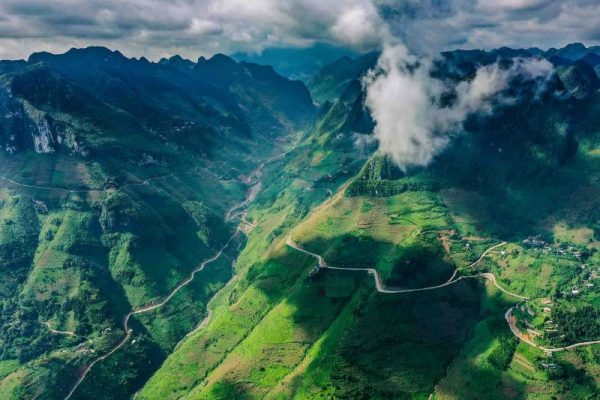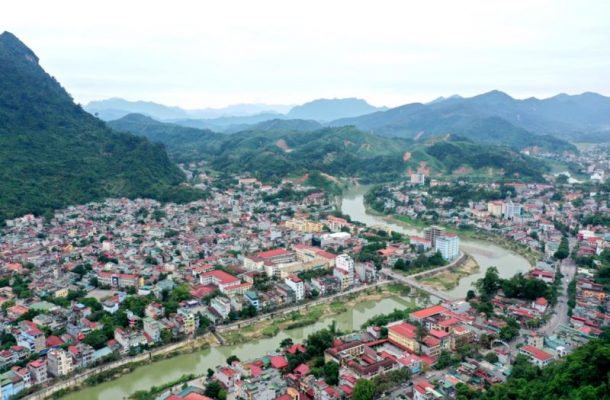Are you a travel enthusiast passionate about conquering pristine, majestic roads? Do you yearn to immerse yourself in the wild nature, enjoy fresh air, and experience the unique culture of new lands? If so, the Ha Giang Loop – one of the most legendary motorbike routes in Vietnam – is the ideal destination for you! Let’s explore with Ha Giang Motorbike Tours in this article!
What is Ha Giang Loops? How many kilometers long?
Renowned as one of Southeast Asia’s most beautiful travel routes, Hà Giang is a must-visit destination for those passionate about adventure. The journey, approximately 350 km long, begins in Quản Bạ and guides travelers through Yên Minh, Đồng Văn, Mèo Vạc, and concludes back at Quản Bạ.
This enchanting winding road takes visitors through deep valleys, lofty passes, dizzying chasms, magnificent geological faults, and pristine canyons. The most notable highlight is the majestic Mã Pí Lèng Pass, one of the “Four Great Passes” of Vietnam. Traveling around Hà Giang also offers the chance to explore the unique culture of its 22 ethnic minorities, savor delicious local specialties, and add more charm to the journey.
Nothing is more wonderful than conquering the legendary Hà Giang route on a motorcycle to fully experience it. The mountain road, hidden high on the plateau and running parallel to the Vietnam-China border, leads travelers to remote lands through rustic ethnic villages, mysterious tribal settlements, vast untouched valleys, imposing limestone ranges, and towering peaks, painting an irresistible picture of wild, majestic nature.

Time to complete a round of Ha Giang
The time needed to complete the Ha Giang Loop Tour depends on your preferences and travel style. On average, travelers will take about 3-5 days to complete the loop, with some trips being shorter or longer. For those who love nature and want to experience the local culture, 4-5 days is a reasonable amount of time. If you have less time, 2-3 days can be enough to complete the Ha Giang Loop. Below is a suggested itinerary for the Ha Giang Loop:
- Ha Giang to Yen Minh: 100 kilometers, 3 hours driving
- Yen Minh to Dong Van: 50 kilometers, 1.5 hours driving
- Dong Van to Meo Vac: 30 kilometers, 1 hour driving
- Meo Vac to Du Gia: 70 kilometers, 3 hours driving
- Du Gia to Ha Giang: 70 kilometers, 2.5 hours driving
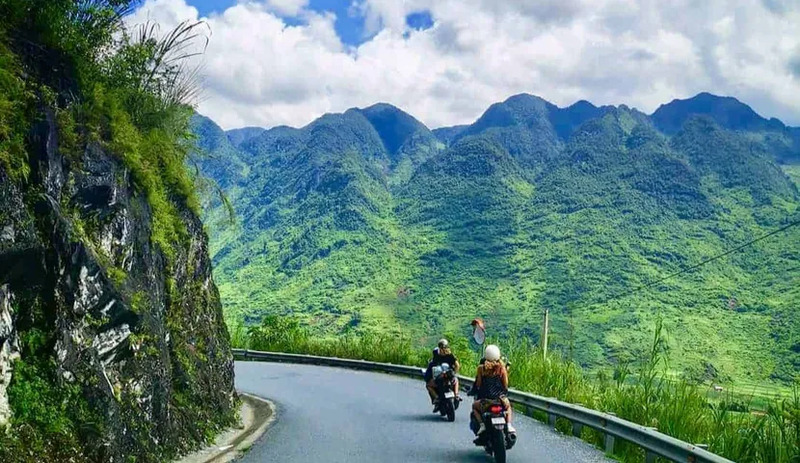
What is the best time to participate in the Ha Giang round?
The best time to embark on the Ha Giang Loops is from September to November and from March to May. During these months, the weather is pleasant, and the landscapes are at their most beautiful. The rice terraces are lush green, and the waterfalls are in full flow, making for a stunning backdrop. It is also during this time that the local hill tribes celebrate harvest festivals, providing a unique opportunity to witness their traditional customs and celebrations.
While the loop can be done year-round, it is not recommended to visit during the rainy season (June-October) as the roads can become treacherous and prone to landslides. Similarly, the winter months (December-February) can also be challenging due to cold temperatures and limited visibility.
See more: Is Ha Giang Loop dangerous? Do you dare to challenge yourself?
Top highlights on the scenic Ha Giang Loops
Ha Giang Loop is known for its majestic natural landscape and unique culture of ethnic minorities. If you come here, you must definitely visit the following outstanding locations:
Quan Ba Pass and the Twin Mountains
As you depart from Ha Giang City, the first major highlight on the Ha Giang Loop is the Quan Ba Pass, also known as Heaven’s Gate. This winding mountain pass takes riders through lush forests and past a series of hairpin bends before reaching the famous Twin Mountains. These two limestone peaks, standing tall at 2,000 meters, are said to represent a man and woman embracing each other, giving them the name “Fairy Bosoms.”

Tham Ma Slope
Another scenic stop on the Ha Giang Loop is Tham Ma Slope, a stretch of road lined with towering cliffs and cascading waterfalls. This loop section is popular among thrill-seekers as it offers a challenging ride with steep inclines and sharp turns. It is also an ideal spot for some stunning photos and a refreshing break from the hot weather.
Ma Pi Leng Pass
Considered one of Vietnam’s most beautiful mountain passes, Ma Pi Leng Pass offers riders breathtaking views of the Nho Que River winding through the rugged mountains. With sheer cliffs dropping into the river below, this part of the loop has become a favorite among photographers and nature enthusiasts. It is also home to several ethnic Hmong villages, offering a glimpse into their traditional way of life.
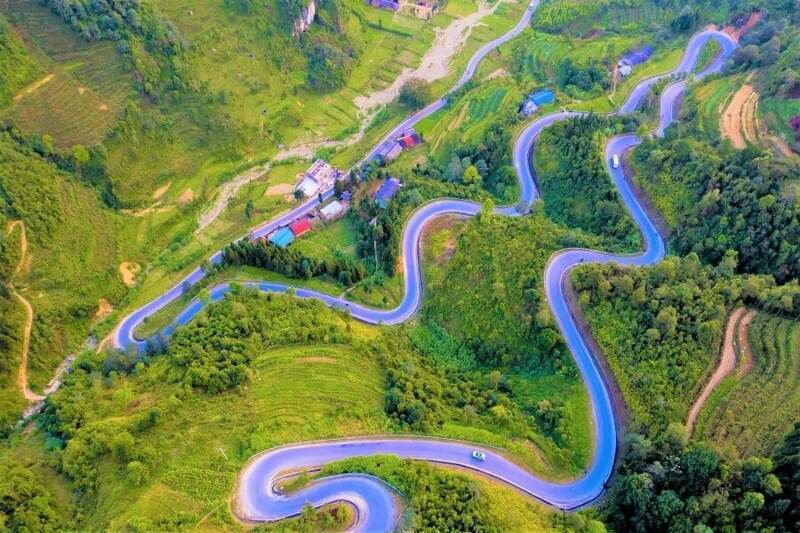
Sung La Valley
The Sung La Valley is another must-see on the Ha Giang Loop, known for its picturesque rice terraces and unique rock formations. The valley is also home to the Vuong Family Palace, a well-preserved mansion built by a local Hmong leader during the French colonial period. Visitors can tour the palace and get a glimpse into the opulent lifestyle of the former Vuong family.
Lung Cu Flagpole
Located at the northernmost point of Vietnam, the Lung Cu Flagpole symbolizes Vietnamese patriotism and sovereignty. Standing at 1,700 meters above sea level, this iconic landmark offers sweeping views of the surrounding countryside and neighboring China. It is also home to the famous Cau Mau Flag, made entirely from colored stones, representing the 54 ethnic groups in Vietnam.
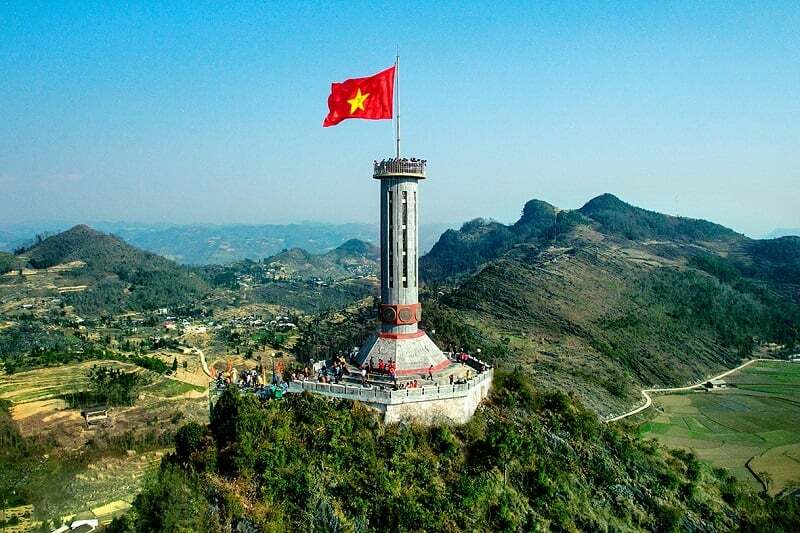
Dong Van Plateau
A UNESCO Geopark, the Dong Van Plateau is a highlight on the Ha Giang Loops that should not be missed. This vast limestone plateau is home to numerous ethnic minority communities with distinct cultures and traditions. Visitors can explore the traditional markets, sample local cuisine, and learn about the customs of these diverse communities.
Nho Que River
Flowing through the Ma Pi Leng Pass, the Nho Que River is a stunning natural wonder. Visitors can take a boat ride on the river, passing through towering cliffs and admiring the vibrant blue waters. Along the way, you’ll also see the famous “Fairy Stream,” where the river takes on a milky color due to the limestone deposits.

Du Gia Village
A stop at Du Gia Village is a must for those looking to experience rural life in Vietnam. Located in the heart of the Ha Giang Loop, this village offers visitors a glimpse into the traditional lifestyle of the Tay ethnic group. You can participate in local activities such as farming, weaving, and cooking and even stay with a local family for an authentic cultural immersion.
Meo Vac Town
The final major highlight of the Ha Giang Loop is Meo Vac Town, a bustling hub near the Chinese border. This town is famous for its Sunday market, where locals from various ethnicities gather to sell their goods and produce. It’s an excellent place to shop for souvenirs and taste traditional dishes, such as Thang Co (a spicy soup made from horse or buffalo meat).
Packing list for Ha Giang route: Motorbike gear and luggage
When embarking on the Ha Giang Loop, it’s essential to come prepared with the right gear and luggage. As the roads can be challenging and unpredictable, having the right equipment can make all the difference in ensuring a safe and comfortable journey. Here are some of the essential items you’ll need to pack for the Ha Giang Route:
- Helmet: For optimal protection, opt for a full-face helmet rather than the more common open-face type. Choose a well-fitting helmet with a secure safety strap.
- Footwear: Prioritize high-quality hiking boots or athletic shoes. Avoid flip-flops entirely due to their low safety, but specialized riding boots are the best choice.
- Jacket: A specialized riding jacket is ideal, though it might be challenging to find and expensive. For warm weather, a light, breathable jacket will suffice.
- Pants: Choose comfortable hiking pants with ample pockets for leg protection. In cold weather, wear additional thermal pants or thin leggings.
- Gloves: Depending on the season, you may need thick, warm, waterproof, or lightweight riding gloves. Bring both types for contingency.
- Pads: If you are wearing shorts and a T-shirt while riding, wear protective arm and knee pads. Pads help absorb impact, providing safety without the need for specialized armor.
- Rainproof Gear: Regardless of the season, waterproof clothing is crucial. You can opt for inexpensive ponchos or jackets with zippers paired with separate waterproof pants. Rainproof gear protects against wind and cold in chilly weather and prevents excessive sweating in summer.
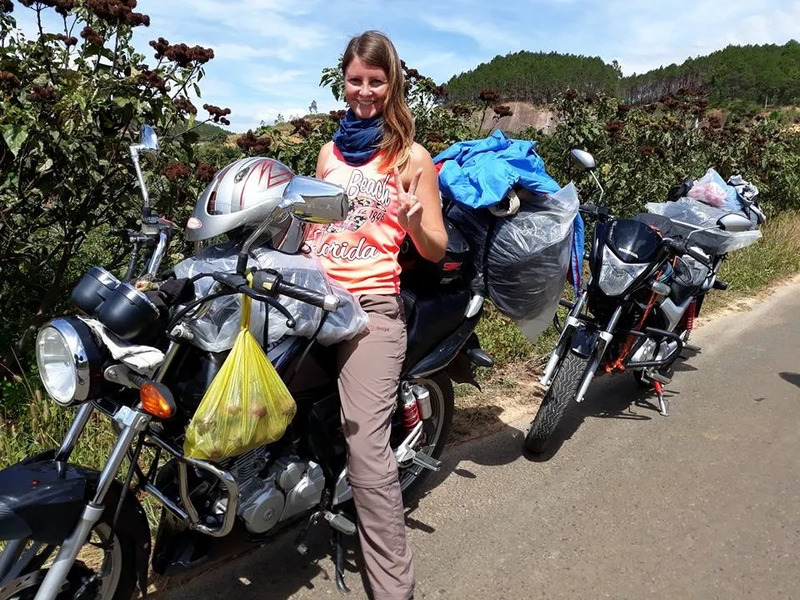
Conclusion
The Ha Giang Loops route is not just a route for motorbikes but it is an unforgettable experience for you. From breathtaking landscapes to vibrant ethnic communities, this journey offers a glimpse of the people and country of Vietnam. So, if you’re looking for a unique, off-the-beaten-path adventure, add the Ha Giang Loop.

